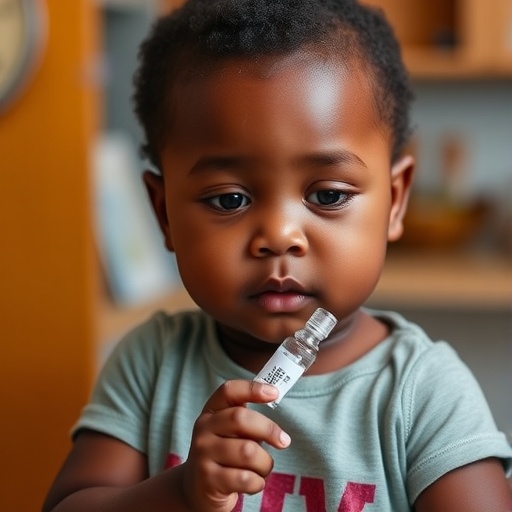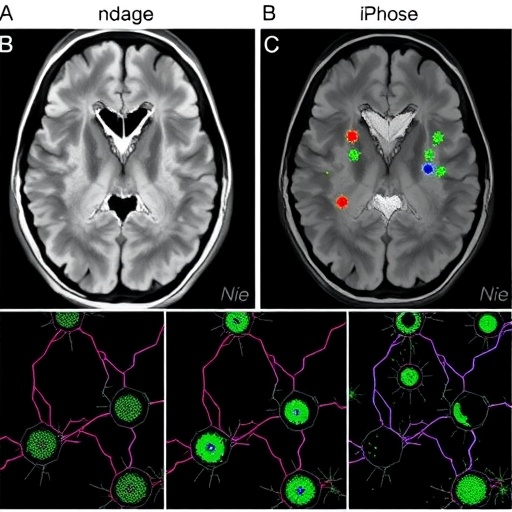A groundbreaking initiative spearheaded by investigators at Weill Cornell Medicine has secured a five-year grant totaling $20.8 million from the National Institute of Allergy and Infectious Diseases (NIAID), a branch of the National Institutes of Health. This funding aims to propel the preclinical development of an innovative experimental vaccine targeting HIV, a virus that has posed one of the most formidable challenges to global health for over four decades. The project emphasizes leveraging novel immunological insights and engineering advances to create a vaccine capable of eliciting broadly neutralizing antibodies (bnAbs) against this elusive pathogen.
HIV remains a staggering public health challenge. According to the World Health Organization, approximately 1.3 million new HIV infections were reported in 2024 alone, with approximately 41 million individuals living with the virus worldwide by the end of that year. Despite the effectiveness of current antiretroviral therapies at controlling viral load and prolonging life expectancy, these treatments require lifelong adherence and fail to prevent new infections. Therefore, the development of a safe and efficacious HIV vaccine has long been recognized as an essential and transformative step toward ending the pandemic.
Initial clinical research and preclinical studies of this novel vaccine candidate indicate promising safety and efficacy profiles when administered early in life, particularly in infancy. The grant-funded research will refine and optimize the vaccine to meet the requirements for pediatric clinical trials, prioritizing regions with high HIV prevalence such as sub-Saharan Africa. The strategic focus on childhood immunization challenges the conventional paradigm where vaccines are typically validated first in adults; instead, this candidate leverages the unique immunological properties of the developing immune system.
Dr. Sallie Permar, chair of the Department of Pediatrics at Weill Cornell Medicine and pediatrician-in-chief at NewYork-Presbyterian Komansky Children’s Hospital, highlights the potential impact of this approach. She points out that early-life induction of robust immunity against a diverse spectrum of HIV variants could drastically reframe prevention strategies and ultimately hasten the conclusion of this decades-old health crisis. Dr. Permar’s leadership underscores the urgency and innovation embodied by this research.
Central to the vaccine development is the utilization of engineered forms of the HIV Env protein complex, a trimeric structure essential for viral entry into host cells. HIV’s notorious variability and its glycan shield have long thwarted vaccine efforts. However, advances in structural biology and protein engineering have facilitated the creation of stabilized Env trimers capable of maintaining native-like conformation outside the viral surface, preserving key epitopes recognized by bnAbs. The Env trimer used in this vaccine, known as BG505 GT1.1 SOSIP, is the latest in a lineage of immunogens refined to optimize immune targeting.
Over the past 25 years, this class of vaccine candidates has been rigorously developed, with significant contributions from researchers such as Dr. John Moore, Dr. Rogier Sanders, Dr. Ian Wilson, and Dr. Andrew Ward. Their collective work on stabilizing the Env trimer and elucidating its antigenic landscape has paved the way for immunogens that can focus antibody responses toward vulnerable viral sites. The current project aims to harness these optimized trimers in a pediatric vaccination strategy designed to elicit durable and sufficiently broad neutralizing antibody responses.
Mechanistically, eliciting bnAbs against HIV is challenging because the virus rapidly mutates its accessible proteins, effectively evading immune recognition. The conserved regions that are less variable tend to be obscured by glycans, creating a steric and chemical barrier to antibody binding. Some rare HIV-infected individuals spontaneously develop bnAbs that overcome these obstacles, providing a molecular blueprint for vaccine design. The experimental Env trimer vaccine seeks to mimic the native viral spike closely enough to stimulate such potent antibody responses in uninfected infants.
This approach is further supported by animal model studies, particularly in rhesus macaques, which have shown that the youthful immune system can generate more robust bnAb responses compared to adults when exposed to Env trimer immunogens. This developmental immunology insight suggests that pediatric vaccination schedules could be tailored to optimize HIV vaccine efficacy, integrating with established childhood immunization programs while taking advantage of the plasticity and responsiveness of the neonatal immune network.
Alongside optimizing immunogen dose and the adjuvant compounds—which enhance immune activation—researchers will also refine the timing and frequency of inoculations to maximize the induction of protective immunity. Dr. Ashley Nelson of Weill Cornell Medicine underscores the importance of this fine-tuning process, which is critical for navigating the complex maturation pathway of bnAbs, ensuring sufficient breadth and potency of the antibody response.
Another significant focus of the research is the investigation into potential interactions between the experimental HIV vaccine and concurrent pediatric vaccines. In regions with high incidence of mother-to-child transmission of HIV, infants routinely receive a series of standard immunizations. Dr. Genevieve Fouda leads studies examining whether co-administration of these conventional vaccines could influence the immunogenicity or efficacy of the HIV vaccine, thereby informing future scheduling and public health strategies.
Complementing these efforts, Dr. Kristina De Paris will oversee immune response analytics, leveraging sophisticated immunological assays to interrogate vaccine-induced antibody and cellular responses. The production and quality control of the BG505 GT1.1 SOSIP trimer will be managed by Dr. John Moore’s team, ensuring the consistency and fidelity of this critical immunogen. Rhesus macaque vaccine trials will be carried out under the guidance of Dr. Koen Van Rompay at the University of California, Davis, providing essential preclinical efficacy data.
Collectively, this multidisciplinary project represents a monumental stride toward achieving an effective pediatric HIV vaccine. By harnessing state-of-the-art protein engineering, immunological insight, and strategic clinical planning, the team aspires to overcome long-standing obstacles in HIV vaccine development, offering hope for a sustainable solution that can be integrated into global childhood vaccination frameworks, potentially transforming the fight against HIV/AIDS worldwide.
Subject of Research: Experimental HIV vaccine development, pediatric immunization, broadly neutralizing antibodies, Env trimer protein engineering
Article Title: Innovative Childhood HIV Vaccine Strategy Receives $20.8 Million NIAID Grant to Advance Preclinical Development
News Publication Date: August 2024
Web References:
WHO HIV Data and Statistics: https://www.who.int/teams/global-hiv-hepatitis-and-stis-programmes/hiv/strategic-information/hiv-data-and-statistics
Weill Cornell announcement on childhood HIV vaccination: https://news.weill.cornell.edu/news/2024/08/childhood-hiv-vaccination-strategy-shows-promise-in-study
Historical research on HIV vaccine development at Weill Cornell: https://news.weill.cornell.edu/news/2025/08/the-quest-for-an-hiv-vaccine
Image Credits: Brad Trent
Keywords: Human immunodeficiency virus, HIV research, HIV vaccines, HIV prevention
Tags: antiretroviral therapy limitationsbroadly neutralizing antibodies in HIVchildhood HIV vaccine developmentglobal health challenges of HIVinnovative HIV vaccine initiativesNIAID funding for vaccine researchNIH funding for HIV researchpreclinical vaccine trials for HIVpublic health impact of HIVtransformative solutions for HIV pandemicvaccine safety and efficacy studiesWeill Cornell Medicine HIV project





